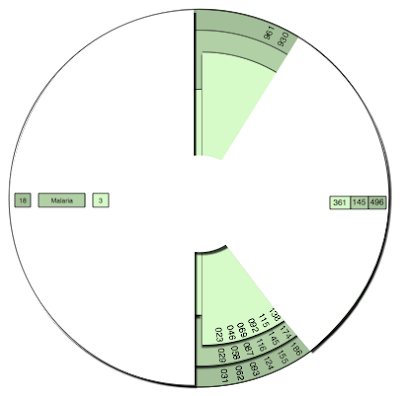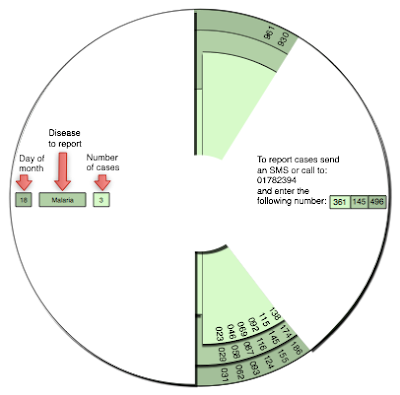During August 2009, we went on a number of field trips to health centers in remote areas of Thailand and Cambodia. The idea was to conduct a few usability tests on Geochat syntax alternatives that we were exploring. Our goal was to simplify the interaction between health workers and the system to ultimately allow them to report disease cases in a semi-structured way.
The case information always originates at the local health center level – this is where the patient comes and gets diagnosed. Most of the case reports are made through phone calls to the district level (the higher administrative level). Case details get lost when the district level summarizes the information by disease and reports the quantity of each to the provincial level.
During our visits to provincial offices, we received useful feedback which ultimately led to the design of the current syntax. However, in health centers we found a few issues that needed to be solved before any syntax at all could be used:
- Most people do not know how to send SMS.
- Some of them do not know how to read an incoming SMS.
- Support for Khmer and Thai characters is not common in the handsets and carriers most people use.
- Even if there is support for the characters, writing SMS using them is much more difficult than writing in English due to the amount of letters in the alphabet.
These posed a huge barrier to solve even before the reports could be collected. It was not about simplifying a syntax.
Reinventing the Wheel
On our way back from the visits, feeling discouraged over the challenges ahead, an idea arose. What if we decouple the process of structuring the report from the channel through it was sent? If you ask someone to send a telegraph, he does not need to know Morse code. In the same way, we could allow health workers to create the report outside the constraints of the tool being used to transmit it.

The reporting wheel has 3 concentric circles. The material can be paper, card-stock or plastic. The circles turn independently, so you can combine any set of values of each ring. On the left side is the value to be selected, on the right side a code that represents that value.
The cover of the wheel allows you to see the values you are selecting and the number you need to report. Once the user has selected the day of the month, the disease and the number of cases he wants to report, a 9 digits number is formed on the right side which represents the 3 values selected.
The user can then make a call to a reporting hotline and enter the number or send it through an SMS (it’s usually much easier to train people to text numbers than letters).
Additional instructions can be written on the cover to make the tool “self-documented.”

This tool is very easy to build and can be done locally; it’s cheap without being fragile; can be shared and does not require batteries. Best of all, it can be created for any language while still being language independent, that is, different wheels in different languages can contain the same codes and thus be used to report the same values. Some initial usability tests indicate that it’s intuitive and easy to learn. In one particular case, a health worker was explaining how to use it to a colleague after just 5 minutes of training.
Codification
There are two issues in the codification process:
- Mistakes in the typing of the numbers: a typo could cause a Malaria report to be mistaken for Dengue.
- If multiple groups want to use the same reporting hotline for different kinds of reports such as veterinary diseases or crop yields, the recipient of the reports needs to know which kind of wheel it came from.
The solution for both problems happens to lie in the same trick. The codes for each reported value are selected in a way that not only allows the detection of errors in the typing, but also enables the detection of the kind of wheel used to report. With the method we developed, a total of more than 600k different wheels can be created and each can be uniquely identified with no additional information – only the 9-digit number reported is required. That means the same reporting hotline can be used to receive reports from a wide variety of sources.
At the moment we are conducting pilots in Thailand and Cambodia. We will soon have more to report on this.



